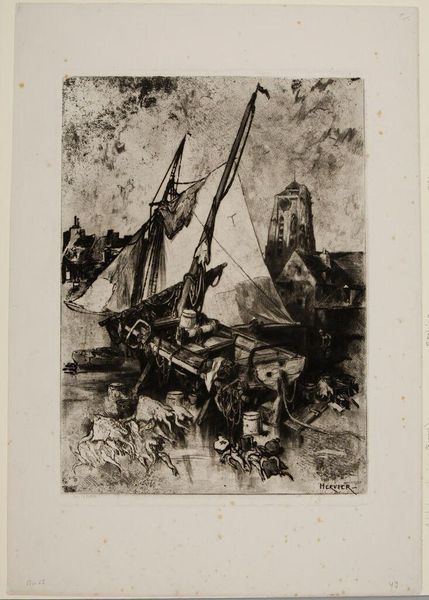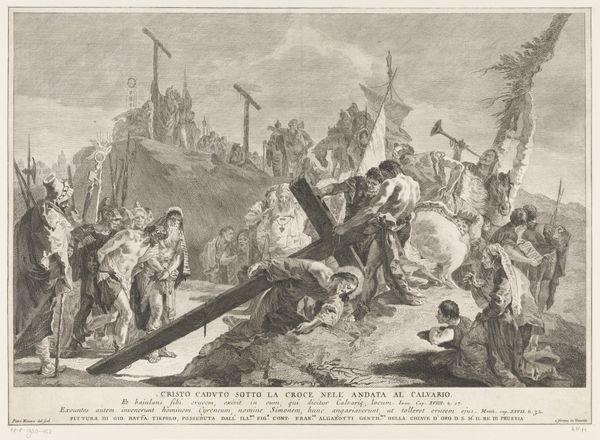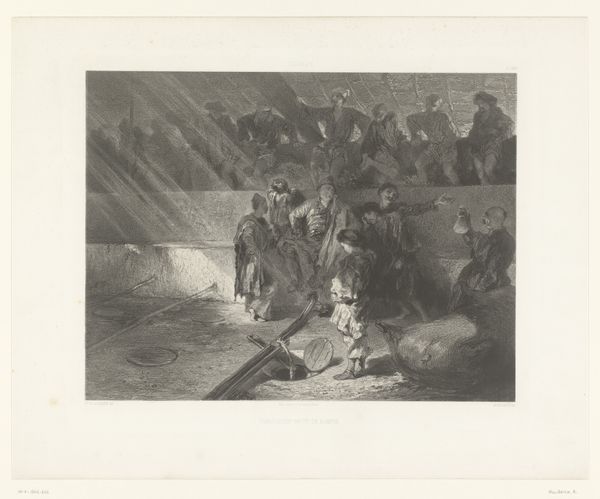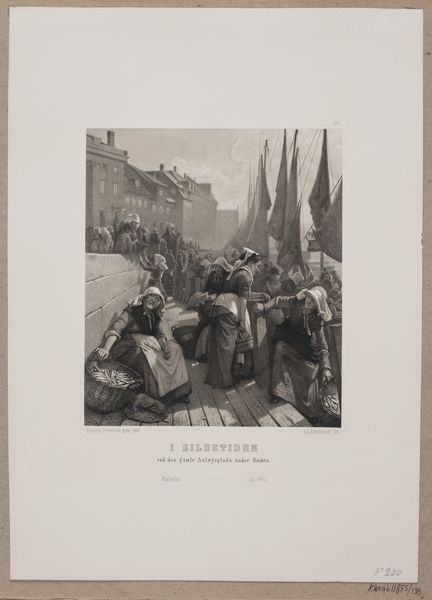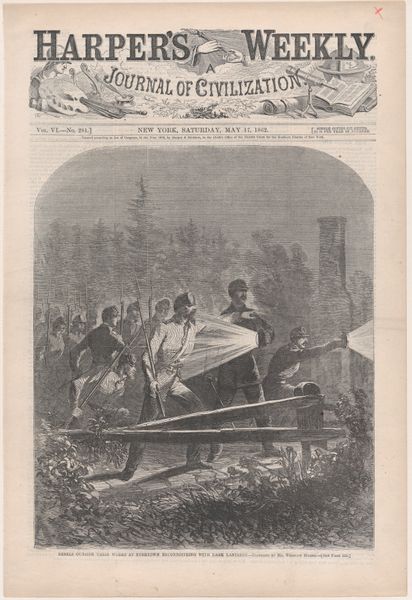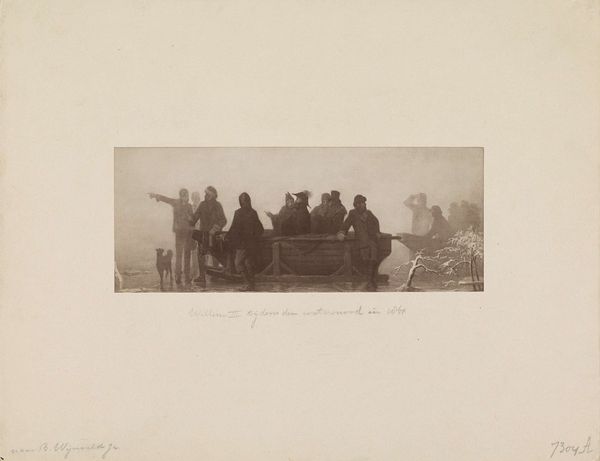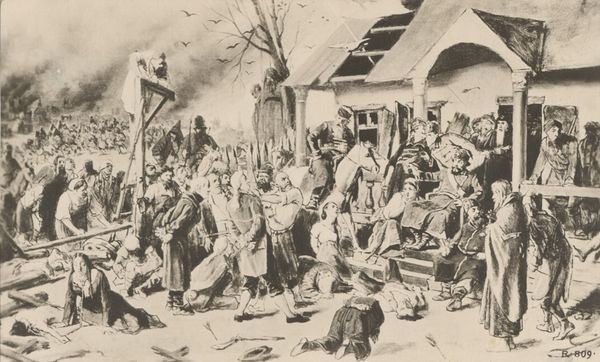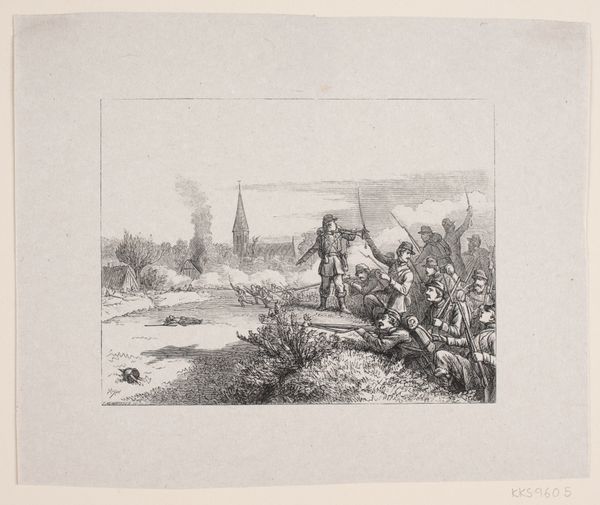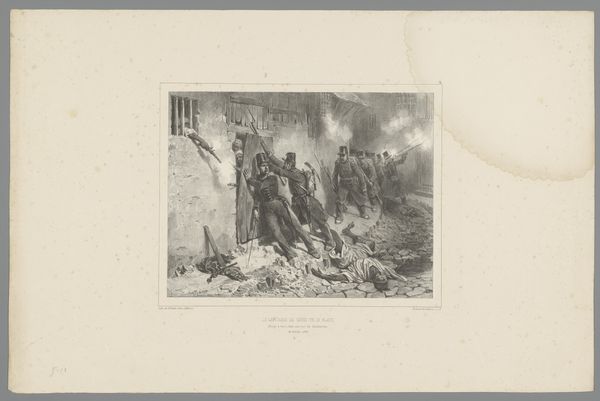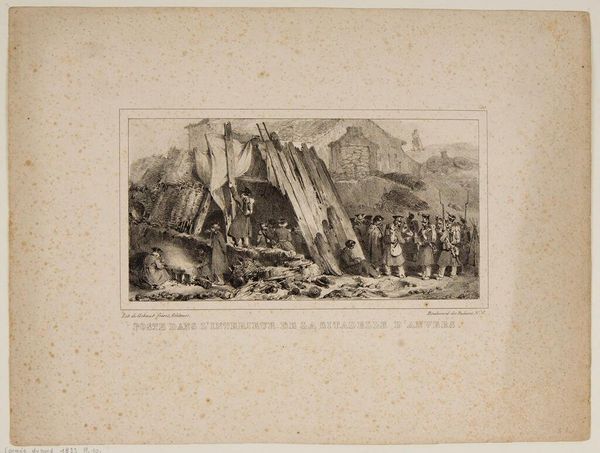
Fotoreproductie van een schilderij door Francisco Pradilla Ortiz, voorstellend Johanna van Castilië naast de doodskist van haar man after 1878
0:00
0:00
print, photography
#
portrait
# print
#
landscape
#
charcoal drawing
#
photography
#
genre-painting
#
history-painting
#
academic-art
#
realism
Dimensions: height 251 mm, width 362 mm
Copyright: Rijks Museum: Open Domain
Curator: This haunting photogravure, crafted after 1878, reproduces Francisco Pradilla Ortiz's celebrated painting depicting Joanna of Castile beside the coffin of her husband. The print finds its home here at the Rijksmuseum. Editor: What immediately strikes me is the stark contrast of the subjects within a muted grayscale palette; there’s such a palpable sense of grief conveyed even through this reproduced medium. It has such a subdued energy about it, especially for what I'm assuming to be the depiction of such a significant historic event. Curator: Indeed. The composition invites us to contemplate Joanna’s psychological state through a convergence of visual and symbolic devices. Note the orthogonal lines, particularly those formed by the coffin, the procession into the landscape—these pull our gaze towards a vanishing point that echoes Joanna’s own apparent descent into the 'madness' suggested by her title. Editor: Thinking about its making, I'm fascinated by the translation from painted canvas to photographic print, a tangible example of how art is re-presented and disseminated. We're twice removed from the purported reality of this moment in history—once by Pradilla’s original work, and once again via this reproduction which also shifts its material consumption in terms of its own economic accessibilities for potential markets of consumers interested in possessing and owning this moment of translated art history. Curator: A compelling point regarding reproduction and its democratization of art consumption. And let's consider Pradilla Ortiz's intent, working within the grand tradition of academic painting to not only represent but also to interpret Joanna's life. He seems to engage conventions of history painting to weave an allegorical commentary. Editor: Considering this history, I wonder how the labor of both Pradilla and the anonymous photographic printer might reshape or affect interpretations of this historical representation as an intersection of many creative makers. Both were consumed, bought, sold, traded. What material conditions affected each moment, and where does artistic intention reside across painting and printing techniques. Curator: I agree it is certainly fertile ground for scholarly examination to challenge such assumptions in the traditional discipline and re-evaluate each stage and hand that has affected it and it's reception over time. Editor: This has certainly allowed me a great vantage point for consideration. Thank you for sharing. Curator: The pleasure was all mine.
Comments
No comments
Be the first to comment and join the conversation on the ultimate creative platform.

